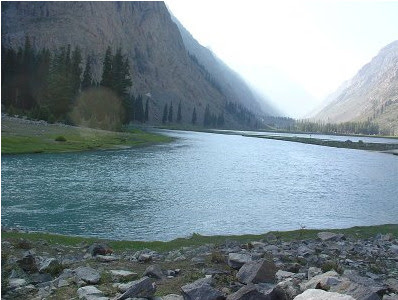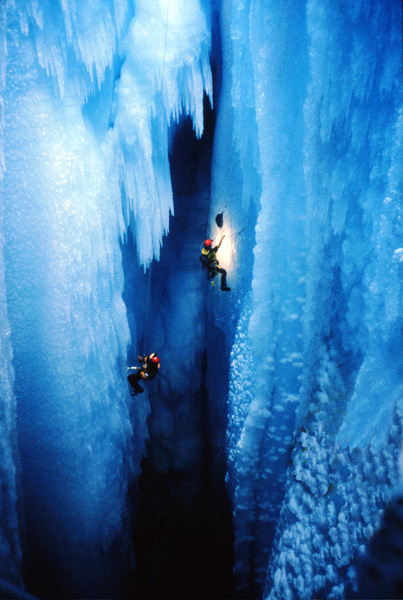The lush green and historic Swat Valley lies
between 34°-40′ to 35° N latitude and 72′ to 74°-6′ E longitude and is
part of the Provincially Administrated Tribal Area (PATA) of the
North-West Frontier Province of Pakistan where three parts of the Asian
continent–South Asia, Central Asia and China, meet.
The names found in ancient sources for Swat are
Udyana and Suvastu because of the scenic beauty of the valley and the
name of the river respectively.

Alexander the Great came here in 327 BC en route
India and conquered Bazira and Ora. At his departure the inhabitants of
the area threw off Greek yoke, and enjoyed either independent or
semi-independent status subsequently. In the meantime Buddhism
penetrated here and Swat became center of Buddhist/Gandhara
civilization. The Turki Shahis incorporated Swat in their kingdom but at
the decline of their power it remained exposed to Hindu Shahis’
influence.
In early tenth century CE/AD, the Muslims occupied
Swat. Consequently, Afghans from different tribes, commonly called Swati
Pukhtun, came and settled here. They remained independent of the
neighboring powers.
The Yusufzais conquered Swat in the first quarter of
the sixteenth century and emerged and remained dominant segment. Instead
of forming a government they lived in the tribal fashion, divided into
two dalas (factions) headed by their own tribal chiefs called Khans and
Malaks. They fought Akbar's mighty arms for years and
incurred great losses over them.

The people of Swat not only fought the British in the
historic battle of Ambela in 1863 but frequently raided British
controlled territories and provided asylum to anti-British elements.
When British forces were sent against Umara Khan of Jandol to relieve
their garrison in Chitral in 1895 the Swatis commanded all the three
main passes leading to Swat: Morah, Shahkot and Malakand. In spite of
tough resistance, the British, however, succeeded in making their way by
a stratagem. They established garrisons at Malakand and Chakdara and
created the Agency of Dir and Swat, commonly called Malakand Agency, in
1895 for protecting their strategic interests. The Swatis, however, rose
en mass in 1897 to oust the British from Malakand and Chakdara under the
leadership of Sartor Faqir, but in vain.

The left-bank lower valley was brought under loose
British control and protectorate in 1895, but the rest of the left-bank
valley continued to enjoy independent status till the emergence of Swat
State. The right-bank valley was, however, already made part of Dir
State during the years 1879–1881 and hence remained part of Dir State
since then but with the interval for the years 1907–1911. The Shamizai,
Sebujni and Nikpi Khel sections, however, made common-cause and put an
end to Dir’s authority over the area, in March 1915. They constituted
five-member council to look after the affairs of their area and finally
brought Abdul Jabber Shah from Sithana and installed him as king of
Swat, 24 April 1915.

Abdul Jabbar Shah remained in power for more than two years, but on 2 September 1917 the jarga broke relations with him and asked him to go back. On his departure the jarga
installed Miangul Abdul Wadud as the next king. He ruled till 1949 and
extended and consolidated the state. He abdicated in favor of his son
Miangul Abdul Haq Jahanzeb on 12 December 1949, with which Jahanzeb
became the next ruler and ruled till the merger of the state in 1969.
During Abdul Wadud and
Jahanzeb’s reign Swati territories forming part of Swat State enjoyed an
amazing peace and development in the fields of education, health and
communication.
Malam Jabba Ski Resort, Swat
 Alexander the Great came here in 327 BC en route
India and conquered Bazira and Ora. At his departure the inhabitants of
the area threw off Greek yoke, and enjoyed either independent or
semi-independent status subsequently. In the meantime Buddhism
penetrated here and Swat became center of Buddhist/Gandhara
civilization. The Turki Shahis incorporated Swat in their kingdom but at
the decline of their power it remained exposed to Hindu Shahis’
influence.
Alexander the Great came here in 327 BC en route
India and conquered Bazira and Ora. At his departure the inhabitants of
the area threw off Greek yoke, and enjoyed either independent or
semi-independent status subsequently. In the meantime Buddhism
penetrated here and Swat became center of Buddhist/Gandhara
civilization. The Turki Shahis incorporated Swat in their kingdom but at
the decline of their power it remained exposed to Hindu Shahis’
influence. The people of Swat not only fought the British in the
historic battle of Ambela in 1863 but frequently raided British
controlled territories and provided asylum to anti-British elements.
When British forces were sent against Umara Khan of Jandol to relieve
their garrison in Chitral in 1895 the Swatis commanded all the three
main passes leading to Swat: Morah, Shahkot and Malakand. In spite of
tough resistance, the British, however, succeeded in making their way by
a stratagem. They established garrisons at Malakand and Chakdara and
created the Agency of Dir and Swat, commonly called Malakand Agency, in
1895 for protecting their strategic interests. The Swatis, however, rose
en mass in 1897 to oust the British from Malakand and Chakdara under the
leadership of Sartor Faqir, but in vain.
The people of Swat not only fought the British in the
historic battle of Ambela in 1863 but frequently raided British
controlled territories and provided asylum to anti-British elements.
When British forces were sent against Umara Khan of Jandol to relieve
their garrison in Chitral in 1895 the Swatis commanded all the three
main passes leading to Swat: Morah, Shahkot and Malakand. In spite of
tough resistance, the British, however, succeeded in making their way by
a stratagem. They established garrisons at Malakand and Chakdara and
created the Agency of Dir and Swat, commonly called Malakand Agency, in
1895 for protecting their strategic interests. The Swatis, however, rose
en mass in 1897 to oust the British from Malakand and Chakdara under the
leadership of Sartor Faqir, but in vain.

































































